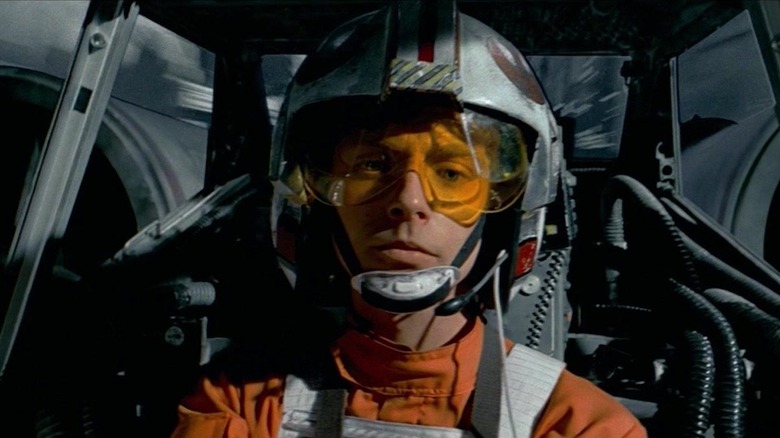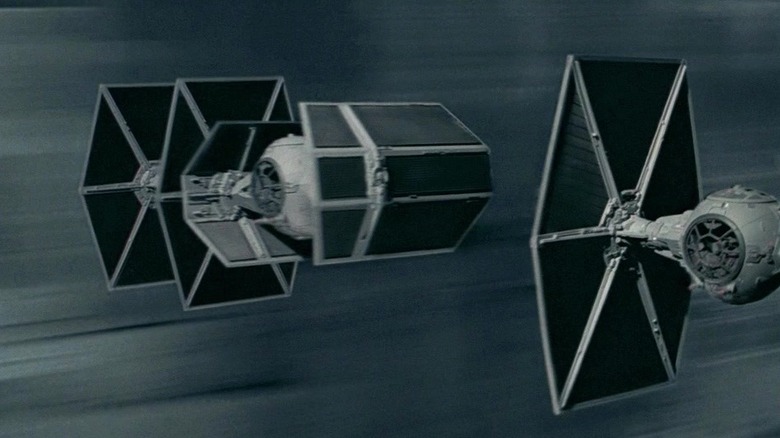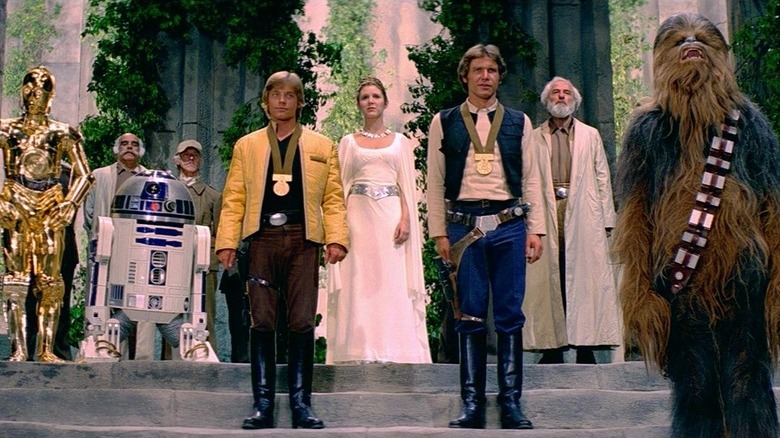George Lucas (Literally) Couldn't Afford Mistakes In The Original Star Wars' Special Effects
Watching films in recent years has gotten us all used to seeing things that don't exist in the real world. Visual effects have certainly come a long way since "Star Wars: Episode I – A New Hope" premiered in 1977. These days VFX artists can create an entire world, like the Quantum Realm in "Ant-Man and The Wasp: Quantumania" with its walking buildings, vast armies, and wild landscape. Back then, technology that advanced didn't exist, and the effects techniques that did were incredibly cost-prohibitive.
The first "Star Wars" film came before even the primitive effects in "Clash of the Titans," a film that looks dated now but was mind-blowing when it premiered in 1981. George Lucas really had to work hard to get his vision on the big screen (something he would add to later when the films were re-released with new effects and additions) and to keep the film's budget reasonable. He had some tricks up his sleeve, but even then, he had to be pretty wily to make it all work, as he told StarWars.com in a 2020 interview about "The Empire Strikes Back."
'We did little animations of the battle sequence, little stick-figure animations'
I remember watching "A New Hope" on television as a kid and noticing what looked like faint boxes around the tie fighters in one scene. I was so excited by the idea that I could figure out what was an effect and what was real. I was very little at the time, and I know that you're not supposed to notice, but this was a whole new world for me. Lucas spoke about the way it all worked in the first two "Star Wars" films, saying that they "carried the kinetic energy from 'Episode IV' to 'Episode V,' where you could pan with things, things would move fast, and you get a more naturalistic feel to the movie." He explained that, for both films, they did animations for the battle scenes with stick figures and called it "some of the very early forms of pre-vis," or pre-visualization. Mapping out the sequences, even with stick figures, saved the production money. Lucas said:
"The only way we could do the movie and get it done for the price was to use as few frames as possible on each visual effect shot, which meant if I had a shot that ran 32 frames, they would give me 36 frames, a couple clean frames on either side."
Taking this down to individual frames is mind-boggling when you think about what is possible now with visual effects. CGI, working in the volume — which puts screens around the actors, allowing them to see the director's vision — and computer programs that facilitate all of this. None of that existed back then. It was also, as Lucas says, incredibly expensive to do even what they had available to them.
' ... you just couldn't make mistakes'
Lucas explained that they then had to take the special effects shots and ensure that they were the same length as the animation that they did with those stick figures. He told the site:
"Each frame would cost like $20,000, so you just couldn't make mistakes. You had to really get it down to the actual frame. And nobody had ever tried to do that. And that's one of the ways we were able to make the film less expensive."
With an average of 24 frames per second in a film, it's a wonder any effects-heavy title was made back then. It's crazy to think about the amount of money the franchise has taken in since the days of counting each frame in that way, but it makes the film all the more special. It's one reason "Star Wars" was so groundbreaking back when it was released in 1977.
All the "Star Wars" films including "A New Hope" are currently streaming on Disney+.


